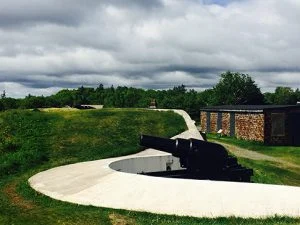Joey, with puppeteers Christopher Mai, Derek Stratton and Rob Laqui. (Photo: Brinkhoff/Mögenburg)
“We wanted to represent him like a real horse,” says James Duncan, one of the puppeteers. “What’s so important with these puppets is that you believe that they are alive by seeing them breathe.”
During the First World War, thousands of horses were sent overseas from Canada. Tony Glen, the director of the Canadian War Museum, says that the horses weren’t used in traditional cavalry charges. Instead, they were used as draft animals, moving equipment, wagons and supplies. He says the Germans also used horses in the same way.
“Many horses participated in the First World War, and unfortunately, most of them didn’t survive,” he says.
The Canadian War Museum has a mini-exhibit of cavalry and veterinary items from the war, including a saddle, equipment and uniform of a Canadian cavalry member. There’s also a full kit from a German soldier.
“It’s to remind people that while it’s a fictional story, it’s based on real things,” Glen says.
The show and mini-exhibit will be at the National Arts Centre in Ottawa until Jan. 26 before going on tour across Canada.
For more on the First World War, keep an eye out for Canadian Geographic’s July/August commemorative issue in honour of the war’s 100-year anniversary.





